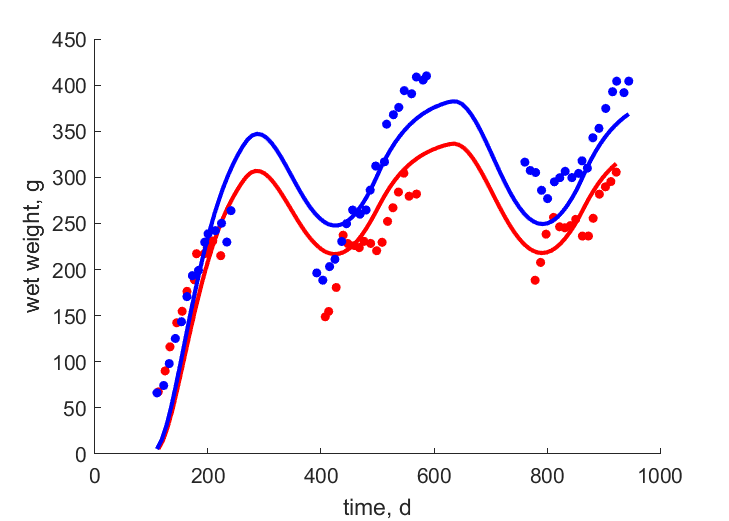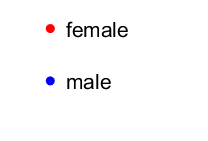Predictions & Data for this entry
| Model: stx | climate: Dfb | migrate: | phylum: |
| COMPLETE = 2.5 | ecozone: THp | food: bxM, xiH | class: |
| MRE = 0.049 | habitat: 0iTg, 0iTd | gender: Dg | order: |
| SMSE = 0.007 | embryo: Tv | reprod: O | family: |
Zero-variate data
| Data | Observed | Predicted | (RE) | Unit | Description | Reference |
|---|---|---|---|---|---|---|
| tg | 27 | 27.01 | (0.0003155) | d | gestation time | AnAge |
| tx | 34 | 34.06 | (0.001626) | d | time since birth at weaning | AnAge |
| tp | 314 | 298.2 | (0.05043) | d | time since birth at puberty | AnAge |
| am | 2446 | 2442 | (0.001437) | d | life span | AnAge |
| Wwb | 5.25 | 5.206 | (0.008349) | g | wet weight at birth | ADW |
| Ww30 | 61.4 | 61.72 | (0.00522) | g | wet weight at 30 d since birth | ADW |
| Wwi | 353 | 344.8 | (0.02334) | g | ultimate wet weight for females | ADW |
| Wwim | 380 | 393 | (0.03409) | g | ultimate wet weight for males | ADW |
| Ri | 0.02137 | 0.02095 | (0.01965) | #/d | maximum reprod rate | AnAge |
Uni- and bivariate data
| Data | Figure | Independent variable | Dependent variable | (RE) | Reference |
|---|---|---|---|---|---|
| tWw_f |   | time | wet weight | (0.137) | MillStri1999 |
| tWw_m |   | time | wet weight | (0.1147) | MillStri1999 |
Pseudo-data at Tref = 20°C
| Data | Generalised animal | Spermophilus citellus | Unit | Description |
|---|---|---|---|---|
| v | 0.02 | 0.02891 | cm/d | energy conductance |
| p_M | 18 | 2055 | J/d.cm^3 | vol-spec som maint |
| k_J | 0.002 | 0.002 | 1/d | maturity maint rate coefficient |
| k | 0.3 | 0.007636 | - | maintenance ratio |
| kap | 0.8 | 0.9568 | - | allocation fraction to soma |
| kap_G | 0.8 | 0.8001 | - | growth efficiency |
| kap_R | 0.95 | 0.95 | - | reproduction efficiency |
Discussion
- Males are assumed to differ from females by {p_Am} only
- Food is assumed to vary as: min(1,f_m+f_a*cos(2*pi*(t-200)/365))
- mod_1: males have equal state variables at b, compared to females
Bibliography